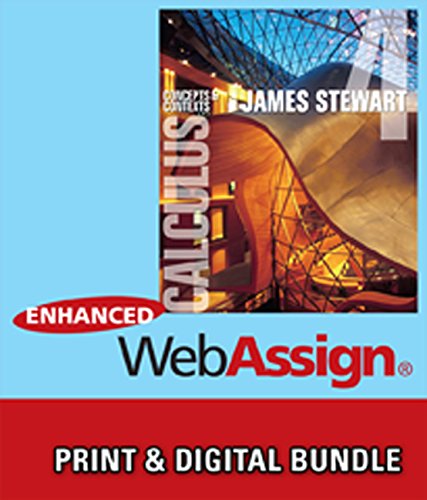

The changes have resulted from talking with my colleagues and students at the University of Toronto and from reading journals, as well as suggestions from users and reviewers.Here are some of the many improvements that I’ve incorporated into this edition: Instructors who prefer fuller coverage of traditional calculus topics should look at my books Calculus, Sixth Edition, and Calculus: Early Transcendentals, Sixth Edition. For instance, there is no complete chapter on techniques of integration I don’t prove as many theorems (see the discussion on rigor on page xv) and the material on transcendental functions and on parametric equations is interwoven throughout the book instead of being treated in separate chapters. The principal way in which this book differs from my more traditional calculus textbooks is that it is more streamlined. I aim to convey to the student both the practical power of calculus and the intrinsic beauty of the subject. In this fourth edition I continue to follow that path by emphasizing conceptual understanding through visual, verbal, numerical, and algebraic approaches. The first three editions were intended to be a synthesis of reform and traditional approaches to calculus instruction. Since then the rhetoric has calmed down somewhat as reformers and traditionalists have realized that they have a common goal: to enable students to understand and appreciate calculus. Such issues as the use of technology, the relevance of rigor, and the role of discovery versus that of drill were causing deep splits in mathematics departments. Answers to Odd-Numbered Exercises.When the first edition of this book appeared twelve years ago, a heated debate about calculus reform was taking place. Integration of Rational Functions by Partial Fractions.H. Intervals, Inequalities, and Absolute Values.B. Applied Project: Radiation from the Stars. Writing Project: How Newton Discovered the Binomial Series. Representations of Functions as Power Series. The Integral and Comparison Tests Estimating Sums. Applied Project: How Fast Does a Tank Drain? Applied Project: Which Is Faster, Going Up or Coming Down? Exponential Growth and Decay. DIFFERENTIAL EQUATIONS.Modeling with Differential Equations. Discovery Project: Complementary Coffee Cups. Applied Project: Where to Sit at the Movies. APPLICATIONS OF INTEGRATION.More about Areas. Discovery Project: Patterns in Integrals. Integration Using Tables and Computer Algebra Systems. Writing Project: Newton, Leibniz, and the Invention of Calculus. Writing Project: The Origins of l'Hospital's Rule. Indeterminate Forms and l'Hospital's Rule. Applied Project: The Calculus of Rainbows.


APPLICATIONS OF DIFFERENTIATION.Related Rates. Rates of Change in the Natural and Social Sciences. Inverse Trigonometric Functions and their Derivatives. Applied Project: Where Should a Pilot Start Descent? Implicit Differentiation. Applied Project: Building a Better Roller Coaster. DIFFERENTIATION RULES.Derivatives of Polynomials and Exponential Functions. Writing Project: Early Methods for Finding Tangents. LIMITS AND DERIVATIVES.The Tangent and Velocity Problems. Laboratory Project: Running Circles around Circles. Mathematical Models: A Catalog of Essential Functions. FUNCTIONS AND MODELS.Four Ways to Represent a Function. Preface.To the Student.Diagnostic Tests.A Preview of Calculus.1.


 0 kommentar(er)
0 kommentar(er)
